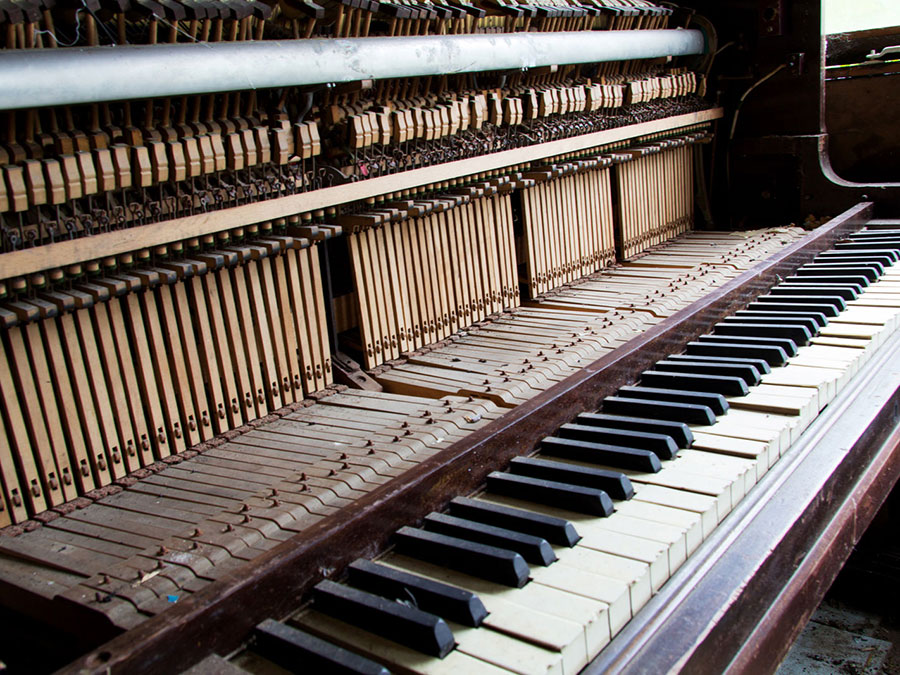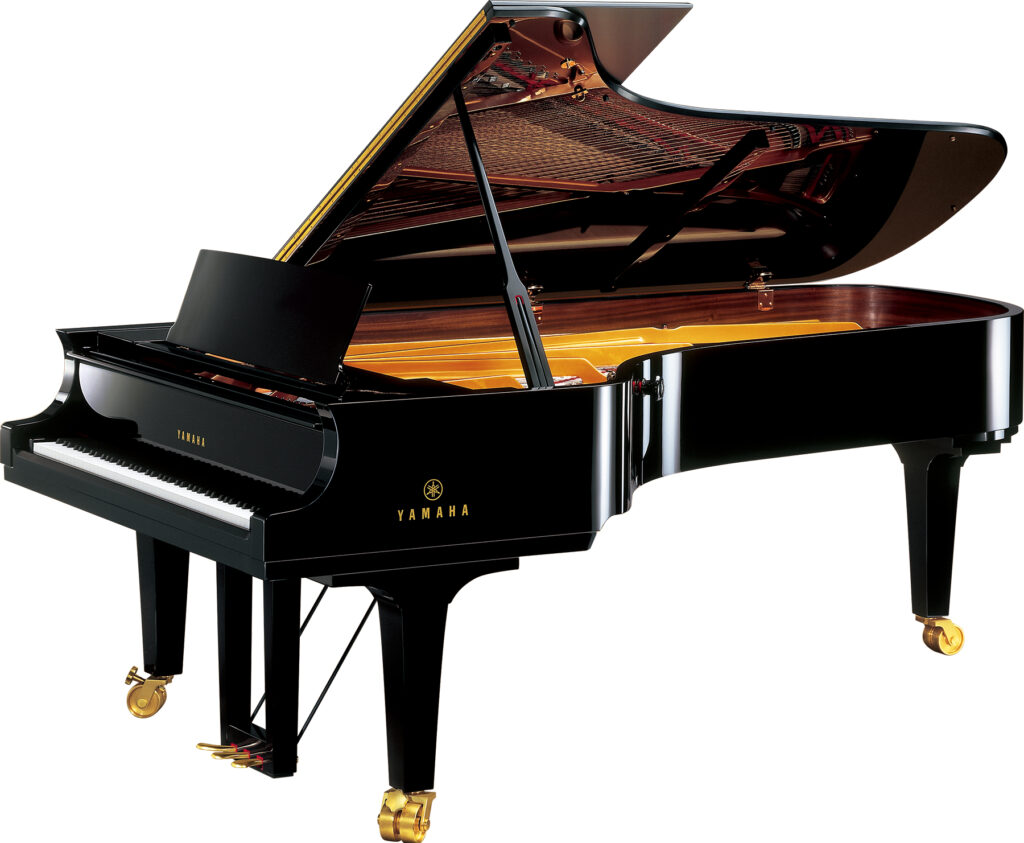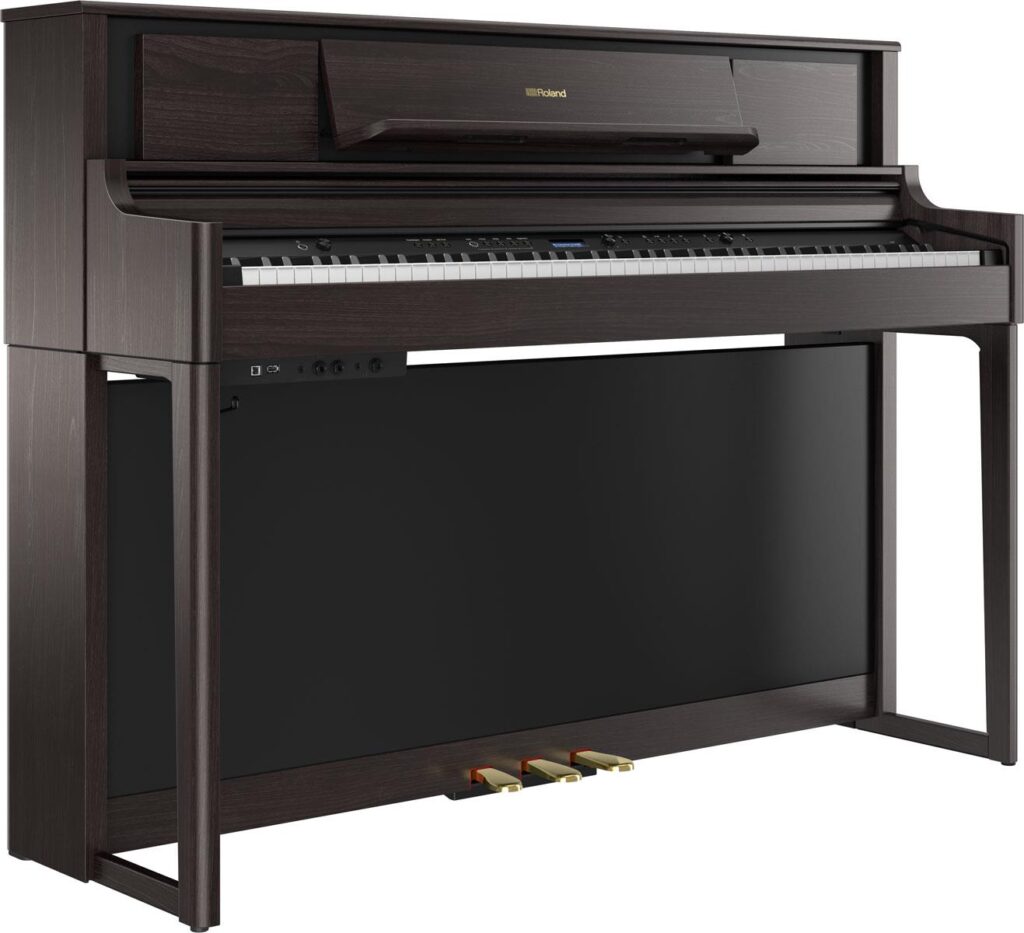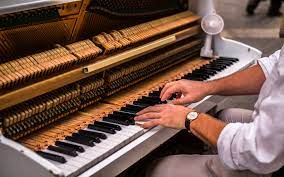In 1700, Italian instrument designer Bartolomeo Cristofori designed the piano. Since the first piano was designed and accepted, several other designs have been made.
You can now find pianos being used in private homes, rehearsal studios, and concert halls, but the main focus of this post is to talk to you about the various types of piano instruments that we have today.
Before proceeding with that, let us talk more about the piano instrument.
Content Navigation
What Is A Piano?
You must have seen what a piano looks like either face to face or in pictures, and we define the piano as a chordophone. The piano is a string instrument designed to make sounds when a note is played, and sounds are produced when a string vibrates. So, for example, playing any of the keys on a piano causes the felted hammer to hit a string, and this strike causes the string to vibrate. The vibration, in turn, produces a sound.
This is how the modern-day piano is designed to operate, and we can also classify the piano as a percussion instrument based on its anatomy.
The piano shares similar characteristics with keyboard instruments, and we are talking about similarities like the organ, clavichord, and harpsichord.
The piano’s dynamic and tonal range is unique to the point where it sets it apart from all other keyboard instruments.
It shouldn’t come as a surprise to you that so many people prefer playing the piano during live and classic concerts, and this is based on all the quality and features that a piano comes with.
The piano is said to be an ingenious creation, and the way it has impacted music is one fact that we cannot turn our eyes away from. In terms of western music, inventing the piano proved to be a game-changer as it made music more fun, pleasant, and interesting.
Suppose you want to sound a bit technical. In that case, you can also classify the piano as an electronic instrument, but do not forget that the piano can also be classified under string and percussion instruments.
The piano is designed to have several moving parts, and the felt hammers hooked to the hammer shank are the most significant of a piano’s moving parts. The striking action of these hammers remains a piano’s most predominant action.
When a pianist presses a piano key down, it causes the hammer to be engaged, and the hammer strikes the strings. It is how sounds are produced on a piano, but it will take a lot of practice for you to be very good at playing the piano.
We do not mean learning how to play the piano is very difficult, but learning how to play it isn’t as easy as it sounds or seems.
One of the best ways you can learn to play the piano is by hiring a teacher to teach you, and watching some online videos can also come in handy sometimes.
Different Types Of Piano Instruments

Even though there are so many pianos with different styles, there are three different piano instruments.
1. Upright Or Vertical Piano
The position of the piano soundboard and strings explains best why this type of piano is named upright or vertical.
Standing perpendicular to the ground earned them the name vertical or upright piano, and this means that the piano is designed to strike the hammer in an upright position.
The mechanism that controls a hammer hitting a string and pressing a key differs from that of the grand piano, and this is why playing the upright piano differs from others.
Smaller soundboards and short strings are attributes of the upright piano compared to the grand piano. This is one reason why manufacturers decided to design the grand piano.
Building a nine-foot-long piano is very different from building a nine-foot-long piano.
2. Grand Piano

The next piano type we want to move on to is the grand piano, and this is the most expensive and largest of all the piano types.
The grand piano soundboards are designed to be horizontal, and this offers a large soundboard area with more strings.
A grand piano’s action is very different from that of the upright piano, and this is because it comes with strings designed to sit in a horizontal position. As a result, Grand pianos are known to be played faster.
You might be wondering what is responsible for this, and this is because the hammers are always being reset by gravity.
There is more control when playing the grand piano than the upright piano because gravity plays. However, many people support the grand piano because it isn’t complicated to play.
Having a visible key size is what you will find on every piano type today, but that of the grand piano is designed to spread deeper into the piano than the upright or vertical piano.
It paves the way for a longer weaving, making it easy for the pianist to play with more control over tone and dynamics.
3. Digital Piano

The last piano type we want to look at is the digital piano, and what gained our interest in this piano is that it sounds like the grand and upright piano.
Sounds cool, right? However, how they produce their sound differs from these other guitars, and sounds are produced by activating sensors through pressing a key.
You will find multiple samples and recordings on digital pianos, and you can play each of these notes back at different volumes.
Its playback volume depends on how hard or soft you play, and you will find different voices and sounds on digital pianos. They are also designed to play along with sequences and have various recording features.
Some digital pianos are designed to run on batteries, while others are very portable. Good digital pianos feel and sound like acoustic guitars, while hybrid digital pianos have acoustic components.
This tells you there is some sort of blurry lines between digital and acoustic pianos.
Conclusion
We have gotten to the end of this post on the Types Of Piano instruments, and we have been able to explain to you the types of pianos you will find on the market.
Surely you will be able to choose what type of piano you want with every information we have provided, and you can tell us about your thoughts, ideas, and opinions concerning this post in its comment section.
Interesting Reads
Class D Amplifier Disadvantages

